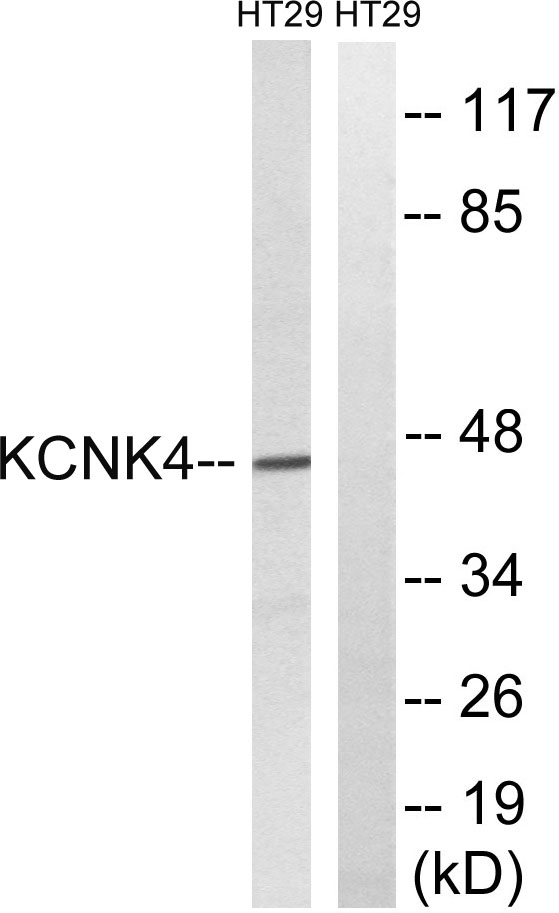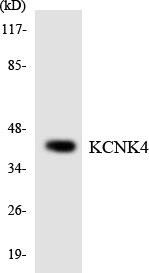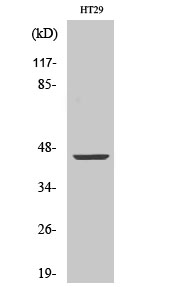产品名称
TRAAK Rabbit Polyclonal Antibody
别名
KCNK4; TRAAK; Potassium channel subfamily K member 4; TWIK-related arachidonic acid-stimulated potassium channel protein; TRAAK; Two pore potassium channel KT4.1; Two pore K(+) channel KT4.1
蛋白名称
Potassium channel subfamily K member 4
存储缓冲液
Liquid in PBS containing 50% glycerol, 0.5% BSA and 0.02% New type preservative N.
Human Gene Link
http://www.ncbi.nlm.nih.gov/sites/entrez?db=gene&term=50801
Human Swissprot No.
Q9NYG8
Human Swissprot Link
http://www.uniprot.org/uniprotkb/Q9NYG8/entry
Mouse Gene Link
http://www.ncbi.nlm.nih.gov/sites/entrez?db=gene&term=16528
Mouse Swissprot No.
O88454
Mouse Swissprot Link
http://www.uniprot.org/uniprot/O88454
免疫原
The antiserum was produced against synthesized peptide derived from human KCNK4. AA range:332-381
特异性
TRAAK Polyclonal Antibody detects endogenous levels of TRAAK protein.
稀释度
WB 1:500 - 1:2000. ELISA: 1:40000. Not yet tested in other applications.
宿主
Polyclonal, Rabbit,IgG
背景介绍
This gene encodes a member of the TWIK-related arachidonic acid-stimulated two pore potassium channel subfamily. The encoded protein homodimerizes and functions as an outwardly rectifying channel. This channel is regulated by polyunsaturated fatty acids, temperature and mechanical deformation of the lipid membrane. This protein is expressed primarily in neural tissues and may be involved in regulating the noxious input threshold in dorsal root ganglia neurons. Alternate splicing results in multiple transcript variants. Naturally occurring read-through transcripts also exist between this gene and the downstream testis expressed 40 (TEX40) gene, as represented in GeneID: 106780802. [provided by RefSeq, Nov 2015],
组织表达
Brain,Frontal cortex,
细胞定位
Cell membrane ; Multi-pass membrane protein .
功能
function:Voltage insensitive, instantaneous, outwardly rectifying potassium channel. Outward rectification is reversed at high external K(+) concentrations.,similarity:Belongs to the two pore domain potassium channel (TC 1.A.1.8) family.,subunit:Homodimer .,
纯化
The antibody was affinity-purified from rabbit antiserum by affinity-chromatography using epitope-specific immunogen.



